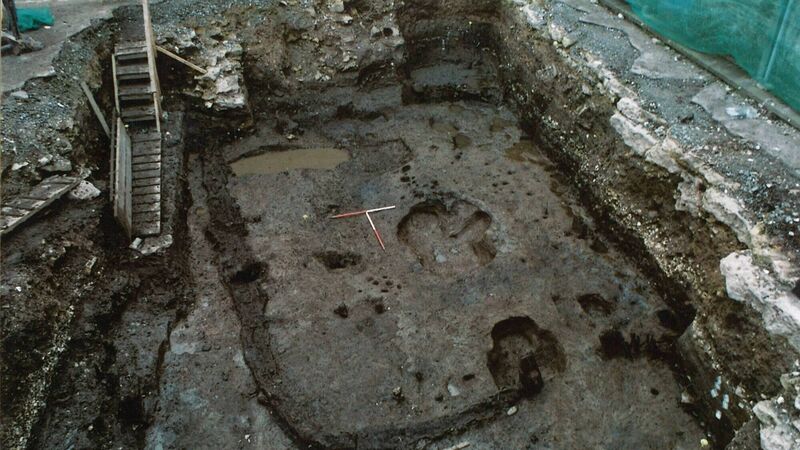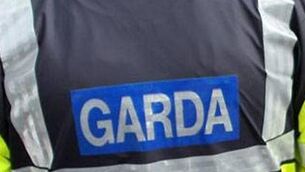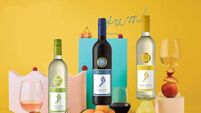Archaeologist provides insight into lives of first Corkonians

The remains of a Viking house found off South Main Street during an archaeological excavation between 2003 and 2005.
Cork’s first inhabitants, those who lived in the marshy ground reclaimed between the two rivers in the city centre, were sociable, hardworking and might even have liked tripe and drisheen, a UCC researcher has said.
According to Dr Rebecca Boyd, who has analysed materials uncovered in archaeological works carried out in the South Main Street area in 2003/4, the data tells “precious stories” and gives “glimpses of daily life in Cork 1,000 years ago”.
In an article published in the latest edition of the Journal of the Cork Historical and Archaeological Society, Dr Boyd focuses on “the first Corkonians, Cork’s 11th and 12th century archaeology”, and writes about the sense of community in the South Main Street area, across from the Beamish & Crawford brewery.
“The rectangular houses were built of post-and-wattle and all the doors faced out on the same street front— today’s South Main Street,” she said.
“This created a sense of shared space and community ... with everyone looking out at, and for, each other. [In] and around the houses, artefacts include jewellery, needles, knives, shovels, jugs, buckets, hair combs, and many other things.
“We know people played music on stringed instruments, flutes and noise-makers called buzz-bones.
“There were a series of keys and padlocks — raising the question of what was important enough to be locked up?
“We even have parts of two small toy boats — giving rise to visions of children at play and dreaming of a life at sea.”
Dr Boyd’s insights are based on the original excavations led by Cork City Archaeologist Ciara Brett and Professor Maurice Hurley.
“There are lots of other activities ... like smelting iron, making needles or pins from bones, and trading.
“These are very visible, but there are lots of invisible activities too, like caring for children, the elderly or those with additional needs, and making clothes. These are ‘maintenance activities’ — often referred to today as ‘the daily load’ of invisible work.
“This work is essential to keeping everyone fed, clean and healthy, but generally dismissed as ‘women’s work’. Just as today, these chores were constantly ongoing in Viking-Age Cork, and we can hunt them out through looking more closely at the artefacts and ecofacts from these excavations.”
One example of these invisible activities from South Main Street is the workload of feeding the household.
“At South Main Street, we see querns for grinding grain and churns for making butter. These emphasise the physical labour involved in making food 1000 years ago,” she said, adding that burden was increased by the absence of modern conveniences to keep food fresh such as fridges and freezers.
“These emphasise the physical labour involved in making food 1,000 years ago. “
Archaeobotanists (archaeologists who look at the remains of plants) identified oats at South Main Street, as well as seeds from salad plants and berries and elder seeds — hinting at salads, fruity desserts and elderflower wine, with the ingredients foraged from around the town.
“The animal bones were examined by zooarchaeologists (archaeologists who look at animal bones) revealing that some joints of meat were roasted over an open fire. In another house, there were more bones from lambs, piglets and calves suggesting that this household could afford more tender cuts of meat.”
Dr Boyd said the diet of the era included meat and blood sausage.
“I don’t see any reason why it wouldn’t have included tripe and drisheen as well,” she said, responding to a query.
“Food was served in bowls with spoons and knives, while drinks were served in cups and jugs.”
Dr Boyd told The Echo that customs around hospitality would have dictated that people would have been very sociable and guests would have been welcome in these Viking-era homes, being offered the best of what was available as people sat around, drinking, eating and sharing stories.







 App?
App?


